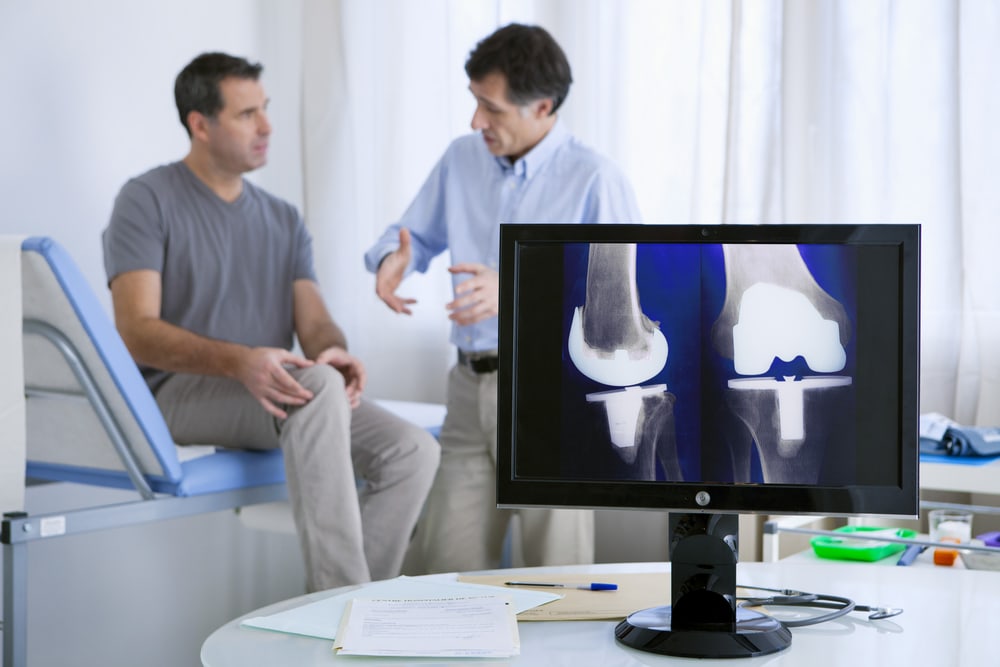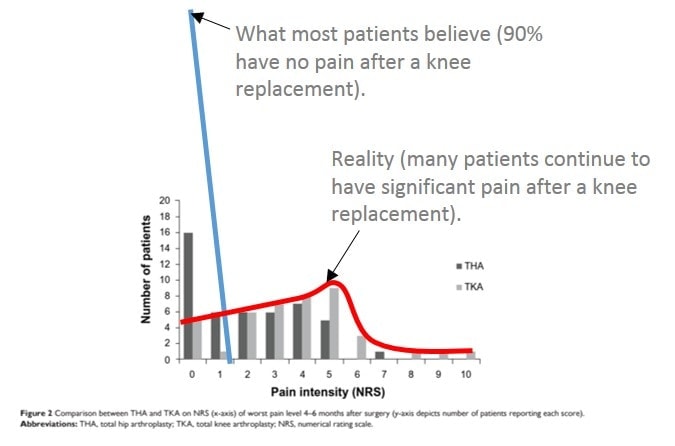“It’s Not My Knee”-A New Study Looks at Knee Replacement Failures

Patients generally believe that you pull yourself up to the knee repair station and you get your joint replaced like you would get a new muffler or carburetor. “Good as new” is often how they conceptualize knee replacement. However, the reality is much different. Now a new study looks at the idea that patients sometimes can’t “bond” with the metal inside them which feels “alien”. Let’s dig in.
Pain After Knee Replacement is Surprisingly Common

I reviewed the above graph on a prior blog which is from a study looking at how common pain is after knee replacement (light grey bars). On the y-axis, you see the number of patients who reported that 0-10 pain number. On the x-axis, you see the pain number reported. The most common pain number after knee replacement in this study was a 5/10! Only a tiny percentage had no pain (0/10) with the majority reporting between 2-6/10 pain. This blog goes into detail on this and other studies of pain after knee replacement.
How About Function After a Knee Replacement?
Another blog covers function after a knee replacement. Most knee arthritis patients want to become normally active again and do things like run, bike ride, or hike. So what’s reality like? A review of a government knee arthritis registry showed that only 5% of patients get back to normal activities. A different study showed that after knee replacement, patients only participated in half of the number of hours of physical activity that they had assumed they could accomplish with their new knee. For example, this study demonstrated that patients expected to be physically active 23 hours a week and in reality, it was less than half that at around 11 hours.
How About The Knee Replacement Feeling “Alien”?
This most recent study represents a new concept. UK researchers interviewed 34 patients who reported persistent pain after their knee replacement surgery (1). This is from the study:
“…2) participants reported a lack of felt connection with and agency over their replaced knee, often describing it as alien or other, and lacked confidence in the knee.”
So a chunk of patients described their knee prosthesis as this piece of alien metal that didn’t feel like it was part of them. That makes sense because, at the end of the day, this surgery involves the amputation of the natural joint and the insertion of a metal/plastic/ceramic device. I and other colleagues who read this paper were just startled by this language as none of us ever thought to ask the question of whether the knee prosthesis feels like it’s part of the patient.
The upshot? This new study was brilliant in that it asked a simple question, does this piece of metal in your leg feel like it’s part of you. The answers to that question, while startling, make sense.
____________________________________________________________________
References:
Moore, A., Eccleston, C. and Gooberman-Hill, R. (2022), “It’s Not My Knee”: Understanding Ongoing Pain and Discomfort After Total Knee Replacement Through Re-Embodiment. Arthritis Care Res. https://doi.org/10.1002/acr.24534

NOTE: This blog post provides general information to help the reader better understand regenerative medicine, musculoskeletal health, and related subjects. All content provided in this blog, website, or any linked materials, including text, graphics, images, patient profiles, outcomes, and information, are not intended and should not be considered or used as a substitute for medical advice, diagnosis, or treatment. Please always consult with a professional and certified healthcare provider to discuss if a treatment is right for you.
